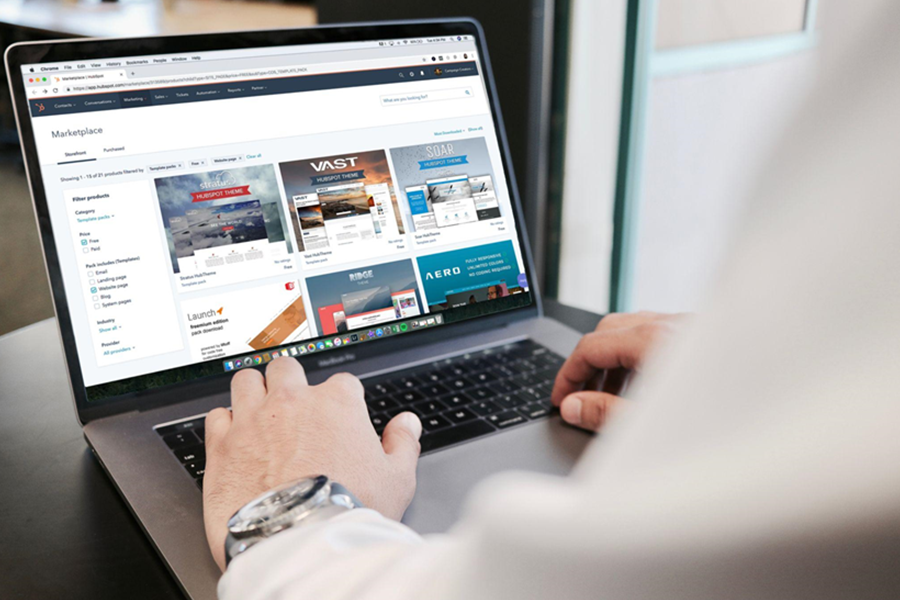E-commerce sales in Europe have seen a positive trend in the past few years, despite the pandemic. In fact, the pandemic actually drove the acceleration of e-commerce activity, leading to considerable market growth throughout the continent.
This article will highlight the latest European e-commerce trends and forecasts, as well as shifting consumer behavior and preferences, to provide e-commerce retailers with insights into the opportunities that will be worth capitalizing on in 2022 and beyond.
Table of Contents
Overview of e-commerce in Europe
Europe’s top e-commerce opportunities
The 4 key takeaways
Overview of e-commerce in Europe
Retail e-commerce revenue in Europe has grown steadily over the past years. Statista’s international market research reports show that while total retail e-commerce revenue stood at nearly US $295.9 billion in 2017, it rose to US $465.4 billion in 2021, and is projected to reach nearly US $569.2 billion by 2025.
In terms of the B2C e-commerce market, the United Kingdom remains the leader in Europe, having seen 30% year-on-year growth in 2020. B2C e-commerce market share in the UK stands at nearly a third of total retail sales within the country, ranking third globally when it comes to sales volume, after China and the United States.
The European average per capita annual spending on e-commerce tells the story of a continent with varied realities. British consumers registered the highest per capita spending in 2020 at €1,020, while the average per capita spending in Poland was considerably less at €456, marking the lowest in the surveyed region. Market data for some of the other key markets within region were as follows:
● United Kingdom – €1,020
● Sweden – €1,012
● Germany – €947
● Netherlands – €929
● Spain – €921
● Denmark – €850
● Finland – €788
● France – €752
● Italy – €674
● Norway – €635
● Belgium – €571
● Poland – €456
An analysis of customer to customer (C2C) e-commerce penetration in Europe also offers insight into overall e-commerce penetration on the continent. A recent survey showed that up to 22% of people within the EU had sold goods within 3 months of the surveyed quarter 2021.
More specifically, the share of individuals who have used the internet to sell goods or services in the EU has steadily increased in the different countries over the 2007–2020 forecast period. While in 2007, the share of individuals engaging in C2C e-commerce stood at 9%, the percentage has steadily increased from 13% in 2010 to 20% in 2019.
It is clear that this is a promising market for e-commerce as e-commerce usage has increased across the continent. The following country-based breakdown of the share of e-commerce users in the EU from 2009 to 2019 gives us more insight into the trajectory of e-commerce usage over the years:
● Austria: 32% (2009) → 54% (2019)
● Belgium: 25% (2009) → 55% (2019)
● Bulgaria: 3% (2009) → 14% (2019)
● Croatia: 6% (2009) → 35% (2019)
● Cyprus: 13% (2009) → 31% (2019)
● Denmark: 50% (2009) → 74% (2019)
● Finland: 37% (2009) → 55% (2019)
● France: 32% (2009) → 58% (2019)
● Germany: 45% (2009) → 71% (2019)
● Greece: 8% (2009) → 32% (2019)
As the above illustrates, e-commerce at large has seen a positive trend across the continent, even though the level and pace of growth has been varied within the different countries. With this in mind, it’s worth considering the e-commerce opportunities available in Europe and how they are distributed across the continent.
Europe’s top e-commerce opportunities
1. The e-commerce-ready market
One of the biggest opportunities for e-commerce in Europe is the fact that Europe is e-commerce ready. Ecommerce News, referring to an index created by the UN Conference on Trade and Development, reports that 7 of the top 10 countries projected to benefit from e-commerce are European. Switzerland, Luxembourg, and Norway were in the top three.
PYMNTS reports that Europe will account for up to 28% of the trillion-dollar sales generated from cross-border e-commerce in 2022. That said, the disparities registered across the continent also highlight an opportunity. The Paypers reports that while Western Europe continues to be the leader in terms of e-commerce turnover within Europe (64% of turnover), other regions actually registered higher turnover growth rates from 2019–2020, pointing to greater market potential. Eastern Europe had the highest turnover growth rate at 36%, Central Europe had 28%, and Southern Europe had a 24% growth rate.
2. Growing prominence of online marketplaces

Online marketplaces have grown in prominence across Europe and this business model is outpacing wholesale within the region. The 2021 European E-commerce Report shows that online marketplaces in Europe have experienced a significant amount of growth, registering approximately 30% growth in 2021.
The pandemic has been one of the greatest catalysts for greater online marketplace uptake as a number of brick-and-mortar stores saw this as an avenue through which they could remain profitable at a time when most physical stores were shut down.
A number of businesses found that this not only acted as a buffer during a tough economic period but was actually a lucrative option that opened stores up to wider customer bases across the globe.
While Europe has generally lagged behind the U.S. in terms of online marketplace growth, Europe-based online marketplaces have grown significantly and are standing as competitors to the US-based market leader Amazon with its US $36.2 billion annual turnover in 2019.
The German online retailer Zalando has become one of the top European marketplaces for fashion, beauty, and sports, with a presence that has extended across the continent. This is understandable as fashion is considered Amazon’s weak spot, leaving an opportunity for other marketplaces to capitalize on such market gaps.
3. FMCG e-commerce growth explosion

The peak of the first wave of the pandemic saw virtually all European markets registering explosions in fast-moving consumer goods (FMCG) e-commerce growth. For major markets in Western Europe, FMCG e-commerce penetration stood at 48% for the U.K., 48% for France, 41% for Italy, 22% for Spain, and 21% for Germany.
The FMCG and food sector registered nearly 70% growth in sales over the pandemic as more and more European consumers sought out food and grocery products online due to physical stores being closed. Italy and Spain saw double-digit growth margins for food and personal care goods sales, and they are set to see a 54% increase over the next 5 years.
Europe is far behind Asia in terms of the share of FMCG sales that take place online, with the share being at 7.6% in the U.K., 6.2% in France, and 2.4% in Spain. However, when looking at the proportion of FMCG sales relative to the total e-commerce sales, the figures begin to look better for Europe.
For instance, while the share stood at 8.7% in 2019, it rose to 16% over 2020, amounting to sales of nearly €5.2 billion. This highlights how FMCG became the fastest-growing category in e-commerce in Germany. The same trend is true for many other European countries, pointing to an opportunity for FMCG retailers to add or expand online channels to their existing businesses.
4. Increased omnichannel retail development
Online retail has long been seen as a threat to businesses that rely on retail driven by in-store purchases. Over the past few years, however, a new trend has emerged that sees online stores flexibly merging several retail channels as part of their expansion efforts.
The benefit of this can be seen in the actions of major online companies such Amazon and Zalando that have begun to venture into offline retail, even while online commerce remains a bulk of their business. According to Ecommerce News, 54% of retailers in Europe sold their products through three or more channels, that included in-store, mobile commerce, and social commerce.
From the retailer’s perspective, there are many benefits that stand to be gained from the implementation of omnichannel retail strategies. Consumer target groups have different shopping preferences. Some of them prefer to research their products online before making the purchase in-store, while others prefer the opposite, getting product advice in the store and then making the purchase online to take advantage of potential offers and convenient shipping methods.
Hybrid forms of retail such as Click & Collect also grew in popularity over the pandemic period as they offered shopping options with added efficiency and convenience for people across the continent.
This means that investing in an omnichannel approach enables businesses to better serve their customers and provide them with individualized shopping experiences. All this serves to make businesses more competitive as it helps gain long-term customer loyalty and increase customer retention.
The 4 key takeaways
Ongoing trends that existed prior to the pandemic and those that were accelerated by the pandemic point to the growing prominence of e-commerce in the European retail market. While this poses a challenge in disrupting business as we know it, business owners across various sectors also stand to gain.
With that in mind, the 4 key takeaways for the e-commerce opportunities that retailers can seize in Europe in 2022 and beyond are:
● Europe is e-commerce-ready
● Online marketplaces are becoming more prominent
● FMCG e-commerce is experiencing a growth explosion
● Omnichannel retail is increasing
Taking advantage of these opportunities will enable your business to stand out as it will be better poised to cater to the significant changes in consumer needs and market conditions. Ultimately, you’ll be able to make your business competitive as the European market’s reliance on e-commerce increases.




